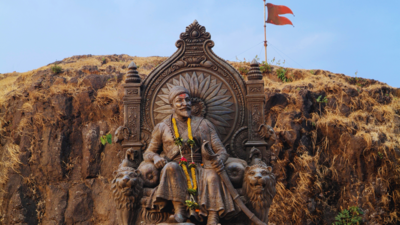ARTICLE AD BOX

India added another feather to its cultural cap as the Maratha Military Landscapes of India have been officially inscribed on the UNESCO World Heritage List. The announcement was made on July 12 during the 47th session of the World Heritage Committee in Paris, marking a major milestone in recognising the Maratha Empire’s military ingenuity and fortification architecture.This inclusion brings India’s tally of UNESCO-recognised heritage sites to 44, spanning cultural, historical, and natural importance.
A glimpse into Maratha military brilliance
The newly listed site is not a single monument but a serial nomination, a network of 12 strategically located forts built by the Marathas between the 17th and 19th centuries. Eleven of these are located in Maharashtra: Salher, Shivneri, Lohgad, Khanderi, Raigad, Rajgad, Pratapgad, Suvarnadurg, Panhala, Vijaydurg, and Sindhudurg.
The 12th fort, Gingee, is in Tamil Nadu, illustrating the regional reach of Maratha influence and military strategy.Read more: No more shoe checks: TSA updates airport screening rules; what flyers need to knowThese forts were more than just defensive structures, they were hubs of governance, military training, and community resilience. They represent an era where geography, architectural innovation, and military science merged to form a unique fortification system unlike any other in India.
Interestingly, India’s nomination had initially received a deferral recommendation in from the International Council on Monuments and Sites (ICOMOS), the UNESCO advisory body. ICOMOS had raised doubts about whether the Maratha forts met the criteria of Outstanding Universal Value, a key requirement for World Heritage inscription.

However, during the July 2024 session, Greece, along with South Korea, Kazakhstan, Kenya, and Senegal, proposed an amendment countering the deferral.
They recommended a two-phased nomination and argued that the forts fulfilled the necessary heritage criteria. The amendment highlighted the military, cultural, and governance systems embedded in the fort architecture and praised the forts as tangible expressions of Swarajya (self-rule) and cultural resilience.The amendment was accepted, and India’s nomination was inscribed on the list — a diplomatic triumph for the Indian delegation.Prime Minister Narendra Modi took to X (formerly Twitter) to celebrate the news: “Every Indian is elated with this recognition…. I call upon everyone to go visit these forts and learn about the rich history of the Maratha Empire.”Maharashtra Chief Minister Devendra Fadnavis and Culture Minister Gajendra Singh Shekhawat also lauded the decision, calling it a proud moment for India and especially for the state of Maharashtra.
A cultural showcase in Paris
India’s delegation, led by Permanent Representative to UNESCO Vishal V. Sharma, played a key role in the inscription process. The team included representatives from the Archaeological Survey of India, the Union ministries of culture, external affairs, and environment, as well as experts from Maharashtra’s archaeology department and DRONAH (Development and Research Organisation for Nature, Arts and Heritage).

In an effort to promote the intangible cultural legacy of the Marathas, the Indian team distributed a range of symbolic items to delegates: a coffee-table book on the forts in multiple languages, a replica of Shivaji’s royal seal (Raj Mudra), Himroo shawls, and even notebooks featuring artwork by schoolchildren living near the forts. A statue of Chhatrapati Shivaji with a cannon and sword was also gifted to UNESCO member states ahead of the session.Read more: 6 unmissable stops that make Chandigarh to Shimla hill tour worthwhileAccording to Sharma, this initiative helped bridge the global knowledge gap about the Maratha military heritage, which is often overshadowed by the more ornate Mughal or Rajput forts in north India.The inscription of the Maratha Military Landscapes marks a significant expansion of global recognition for India’s diverse regional histories. While India’s Mughal and Rajput forts have long received attention, this nomination showcases the military innovation and resilience of the Marathas, who used their native geography — hilltops, coastal outposts, and inland plateaus — to their advantage in designing almost impenetrable fortresses.With the global spotlight now on these forts, they are likely to see a rise in heritage tourism, offering both a cultural and economic boost to the regions they belong to.



.png)
.png)
.png)
















 6 hours ago
5
6 hours ago
5









 English (US) ·
English (US) ·